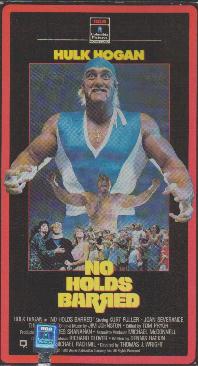
An action movie featuring Hulk Hogan?...or an allegorical fiction with a clear theme of white supremecy?
In 1989, a movie called No Holds Barred came out and I, like many other kids and teenagers at the time, was excited to see Hulk Hogan in a movie. A WWF champion and sports entertainment icon, Hogan was a fan favorite in wrestling. I didn't read much into the movie at the time. I enjoyed it for its pure entertainment value like everyone else.
So ten years later I'm about to watch it and I'm under the impression that it's just about a good man standing up for himself and his friends and he goes on to defeat the bad guy.
After watching it, I realized that No Holds Barred is an allegorical fiction with a clear theme of white supremecy.
An allegory is a story meant to convey some moral, message or significant theme. The characters are symbols and their names are used as metaphors.
In this movie, Hulk Hogan is named 'Rip'. He is the protagonist. The antagonist (character in conflict with the protagaonist) is 'Zeus', played by Tom 'Tiny' Lister, Jr. Zeus is lead by an evil television executive named Tom Brell.
'Rip' 'Hulk Hogan' 'Tom' and 'Zeus' are all allegorical characters.
Rip's catch phrase is "Rip 'em" This really stands for "Rip 'em off" and is a metaphor for the white man trying to rip off the black man. You will also notice that Hogan has white-blonde hair which is a nordic or aryan feature.
In the story you are led to believe that Zeus is an angry man with a bad temper destroying anything in his path. The reality is that Hogan is an angry man with a bad temper. The Hulk Hogan name itself stems from "The Incredible Hulk"-a man that when angered would transform into a monster with a horrible temper.
Zeus is black, his name is also a metaphor. Zeus is the name of the Greek mythological God of the Gods. This means that in this story, Zeus represents all black men.
The 2nd bad guy is the TV executive Tom Brell. His name is also a metaphor. Tom, as in "Uncle Tom". His character is white, but like the definition of "Uncle Tom", he is really a black man pretending to be a white man.
Hogan's girlfriend is named Samantha (played by Joan Severance) She is first introduced to Tom Brell as 'Sam'. He turns around to see her expecting a man and is shocked to learn that 'Sam' is a woman. You get the feel from him that a woman does not belong in the workplace. The most shocking scene comes when she is slapped and knocked down by Brell and his two business partners do nothing about it.
All this is an attempt to suggest man's superiority over women.
